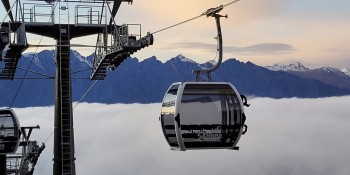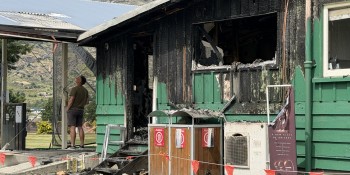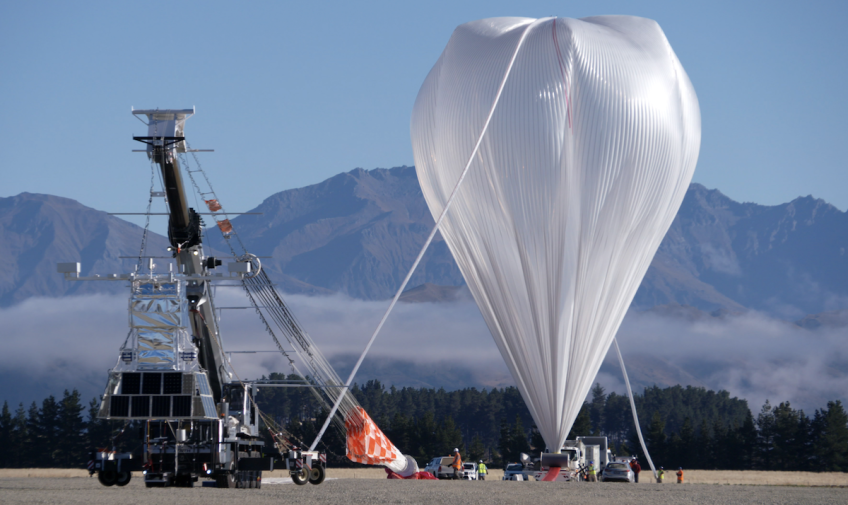
NASA set to fly two giant balloons from Wānaka
NASA’s Scientific Balloon Program will conduct two super pressure balloon (SPB) launches from Wānaka to further test and qualify the technology, which can offer cost savings compared to space missions.
While the two launches are primarily to test the SPB technology, NASA is also flying science payloads as missions of opportunity on each balloon. The balloons may also be visible from the ground during their flights, which are planned for up to 100 days or more.
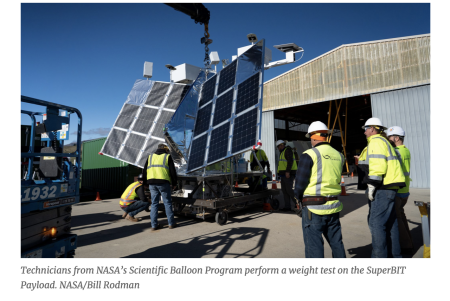 “The super pressure balloon technology is a real game-changer for conducting cutting-edge science at the edge of space at a fraction of the cost of flying into space,” said Debbie Fairbrother, NASA’s Balloon Program Office chief based at the agency’s Wallops Flight Facility in Virginia.
“The super pressure balloon technology is a real game-changer for conducting cutting-edge science at the edge of space at a fraction of the cost of flying into space,” said Debbie Fairbrother, NASA’s Balloon Program Office chief based at the agency’s Wallops Flight Facility in Virginia.
“Some of the mind-blowing work planned this year includes a mission peering into space to study galaxy clusters and another looking at high-energy particles from beyond our galaxy.”
Launch operations are scheduled to begin in April and updates on the campaign will be posted on NASA's Super Pressure Balloon blog.
The first scheduled flight will fly the Super Pressure Balloon Imaging Telescope (SuperBIT), from Princeton University, which uses a wide field of view to image large galaxy clusters from a balloon platform in a near-space environment.
By measuring the way these massive objects warp the space around them, also called “weak gravitational lensing,” SuperBIT will be able to map the dark matter present in these clusters. The second mission will fly the Extreme Universe Space Observatory 2 (EUSO-2), a mission from the University of Chicago that aims to build on data collected during a 2017 mission.
EUSO-2 will detect ultra-high energy cosmic-ray particles from beyond our galaxy as they penetrate Earth’s atmosphere. The origins of these particles are not well known, so the data collected from EUSO-2 will help solve this science mystery.
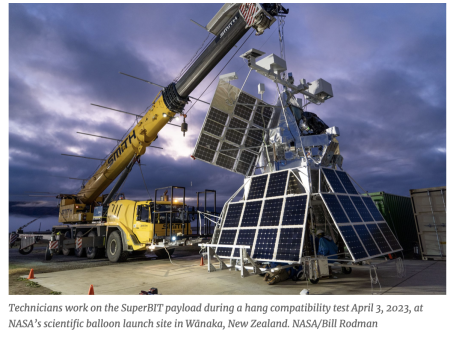 NASA invites the public to follow these missions as they fly on their globetrotting journeys about the Southern Hemisphere’s mid-latitudes, said Fairbrother.
NASA invites the public to follow these missions as they fly on their globetrotting journeys about the Southern Hemisphere’s mid-latitudes, said Fairbrother.
A balloon’s flight path is controlled by the wind speed and direction at float altitude. The missions will spend most of their time over water, and for any land crossings, NASA works with the U.S. State Department to coordinate country overflight approvals.
Real-time tracking of these flights is publicly available here.
In addition, NASA publicizes balloon launch and tracking information via the web at NASA and across NASA’s social media platforms.
NASA has launched three SPBs from Wānaka, one each in 2015-2017. A planned 2020 campaign was canceled due to the COVID-19 pandemic, and the agency’s 2022 campaign ended without a launch due to a ground system anomaly.
“Long-duration balloon flight is a massive challenge, and each flight campaign helps build on lessons learned for improving not just the balloon technology, but our operational procedures as well,” said Fairbrother.
Maintaining a constant float altitude in the stratosphere is a formidable challenge for airborne systems, including balloons. Most standard heavy-lift zero pressure balloons can vary in altitudes as much as 45,000 feet (13.7 km) due to the alternating warming and cooling of the day-night cycle.
In response, mission operators typically release excess weight in the form of ballast to maintain altitude. The SPB, in contrast, is designed to maintain a positive internal pressure and shape irrespective of its environment, which keeps the balloon at a stable float altitude without dropping ballast.
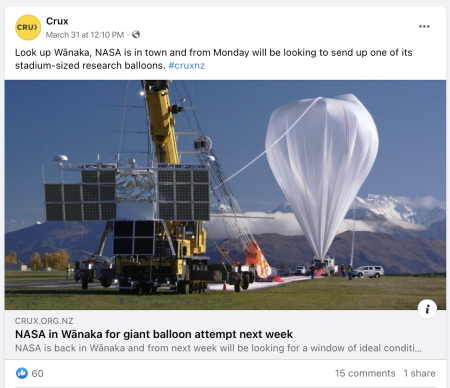 The 18.8-million-cubic-foot (532,000-cubic-meter) balloon is helium-filled and about the size of a football stadium when fully inflated at its operational float altitude of 110,000 feet (33.5 kilometres). Wānaka is NASA’s dedicated launch site for mid-latitude, long-duration balloon missions.
The 18.8-million-cubic-foot (532,000-cubic-meter) balloon is helium-filled and about the size of a football stadium when fully inflated at its operational float altitude of 110,000 feet (33.5 kilometres). Wānaka is NASA’s dedicated launch site for mid-latitude, long-duration balloon missions.
NASA conducts SPB launches from New Zealand in collaboration with the Queenstown Airport Corporation, Queenstown Lakes District Council, New Zealand Space Agency, and Airways New Zealand.
NASA’s Wallops Flight Facility in Virginia manages the agency’s scientific balloon flight program with 10 to 15 flights each year from launch sites worldwide. Peraton, which operates NASA’s Columbia Scientific Balloon Facility (CSBF) in Texas, provides mission planning, engineering services, and field operations for NASA’s scientific balloon program.
The CSBF team has launched more than 1,700 scientific balloons over some 40 years of operations. NASA’s balloons are fabricated by Raven Aerostar. The NASA Scientific Balloon Program is funded by the NASA Headquarters Science Mission Directorate Astrophysics Division.
Main image (NASA): NASA's super pressure balloon stands fully inflated and ready for lift-off from Wānaka Airport, New Zealand, in 2017.
For more information on NASA's Scientific Balloon Program, visit: https://www.nasa.gov/scientificballoons
















